The Intel Core i9-9980XE CPU Review: Refresh Until it Hertz
by Ian Cutress on November 13, 2018 9:00 AM ESTGaming: Shadow of the Tomb Raider (DX12)
The latest instalment of the Tomb Raider franchise does less rising and lurks more in the shadows with Shadow of the Tomb Raider. As expected this action-adventure follows Lara Croft which is the main protagonist of the franchise as she muscles through the Mesoamerican and South American regions looking to stop a Mayan apocalyptic she herself unleashed. Shadow of the Tomb Raider is the direct sequel to the previous Rise of the Tomb Raider and was developed by Eidos Montreal and Crystal Dynamics and was published by Square Enix which hit shelves across multiple platforms in September 2018. This title effectively closes the Lara Croft Origins story and has received critical acclaims upon its release.
The integrated Shadow of the Tomb Raider benchmark is similar to that of the previous game Rise of the Tomb Raider, which we have used in our previous benchmarking suite. The newer Shadow of the Tomb Raider uses DirectX 11 and 12, with this particular title being touted as having one of the best implementations of DirectX 12 of any game released so far.
| AnandTech CPU Gaming 2019 Game List | ||||||||
| Game | Genre | Release Date | API | IGP | Low | Med | High | |
| Shadow of the Tomb Raider | Action | Sep 2018 |
DX12 | 720p Low |
1080p Medium |
1440p High |
4K Highest |
|
All of our benchmark results can also be found in our benchmark engine, Bench.
| Game | IGP | Low | Medium | High |
| Average FPS | 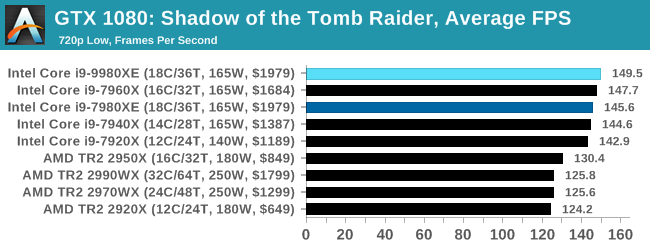 |
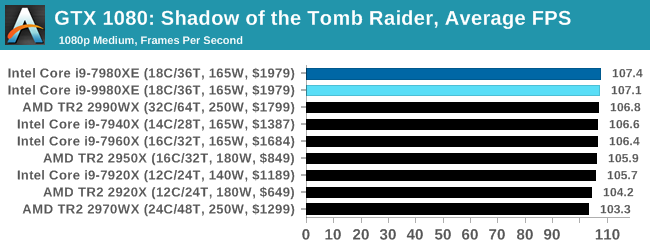 |
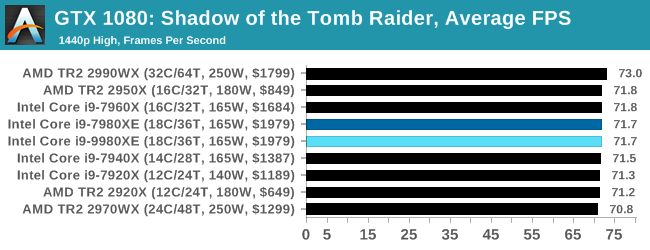 |
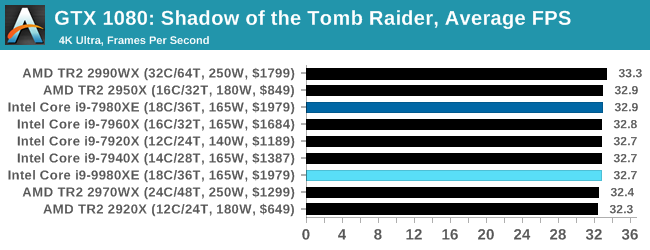 |
| 95th Percentile | 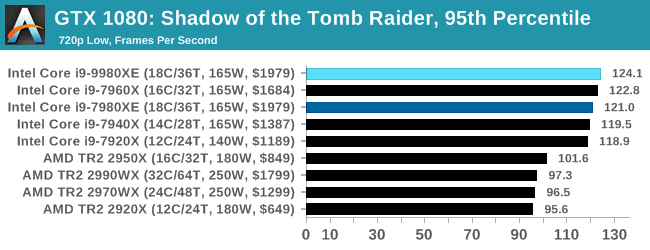 |
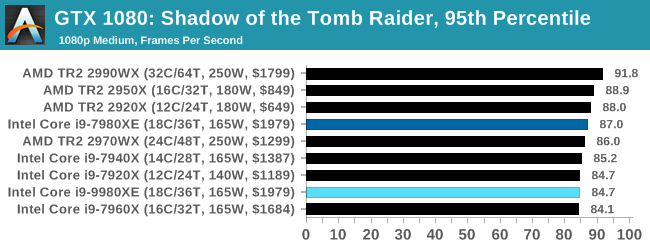 |
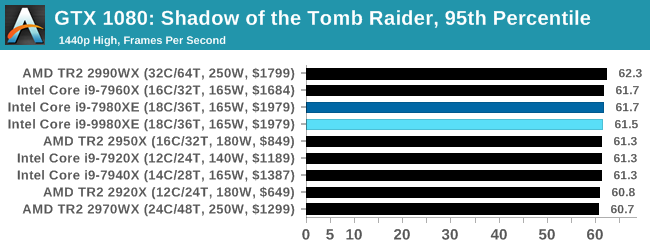 |
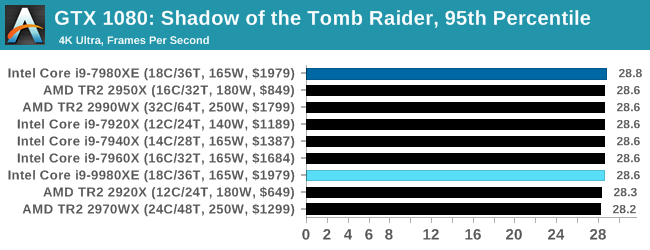 |


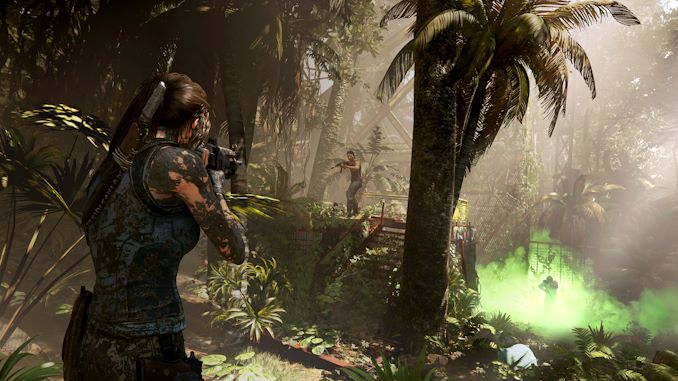









143 Comments
View All Comments
zeromus - Wednesday, November 14, 2018 - link
@linuxgeek, logged in for the first time in 10 years or more just to laugh with you for having cracked the case with your explanation there at the end!HStewart - Tuesday, November 13, 2018 - link
I have IBM Thinkpad 530 with NVidia Quadro - in software development unless into graphics you don't even need more than integrated - even more for average business person - unless you are serious into gaming or high end graphics you don't need highend GPU. Even gaming as long as you are not into latest games - lower end graphics will do.pandemonium - Wednesday, November 14, 2018 - link
"Even gaming as long as you are not into latest games - lower end graphics will do."This HEAVILY depends on your output resolution, as every single review for the last decade has clearly made evident.
Samus - Wednesday, November 14, 2018 - link
Don't call it an IBM Thinkpad. It's disgraceful to associate IBM with the bastardization Lenovo has done to their nameplate.imaheadcase - Tuesday, November 13, 2018 - link
Uhh yah but no one WILL do it on mobility. Makes no sense.TEAMSWITCHER - Tuesday, November 13, 2018 - link
You see .. there you are TOTALLY WRONG. Supporting the iPad is a MAJOR REQUIREMENT as specified by our customers.Augmented reality has HUGE IMPLICATIONS for our industry. Try as you may ... you can't hold up that 18 core desktop behemoth (RGB lighting does not defy gravity) to see how that new Pottery Barn sofa will look in your family room. I think what you are suffering from is a historical perspective on computing which the ACTUAL WORLD has moved away from.
scienceomatica - Tuesday, November 13, 2018 - link
@TEAMSWITCHER - I think your comments are an unbalanced result between fantasy and ideals. I think you're pretty superficially, even childishly looking at the use of technology and communicating with the objective world. Of course, a certain aspect of things can be done on a mobile device, but by its very essence it is just a mobile device, therefore, as a casual, temporary solution. It will never be able to match the raw power of "static" desktop computers.working in a laboratory for physical analysis, numerous simulations of supersymmetric breakdowns of material identities, or transposition of spatial-temporal continuum, it would be ridiculous to imagine doing on a mobile device.There are many things I would not even mention.HStewart - Tuesday, November 13, 2018 - link
For videos - as long as you AVX 2 (256bit) you are ok.SanX - Wednesday, November 14, 2018 - link
AMD needs to beat Intel with AVX to be considered seriously for scientific apps (3D particle movement test)PeachNCream - Tuesday, November 13, 2018 - link
All seven of our local development teams have long since switched from desktops to laptops. That conversion was a done deal back in the days of Windows Vista and Dell Latitude D630s and 830s. Now we live in a BYOD (bring your own device) world where the company will pay up to a certain amount (varies between $1,100 and $1,400 depending on funding from upper echelons of the corporation) and employees are free to purchase the computer hardware they want for their work. There are no desktop PCs currently and in the past four years, only one person purchased a desktop in the form of a NUC. The reality is that desktop computers are for the most part a thing of the past with a few instances remaining on the desks of home users that play video games on custom-built boxes as the primary remaining market segment. Why else would Intel swing overclocking as a feature of a HEDT chip if there was a valid business market for these things?